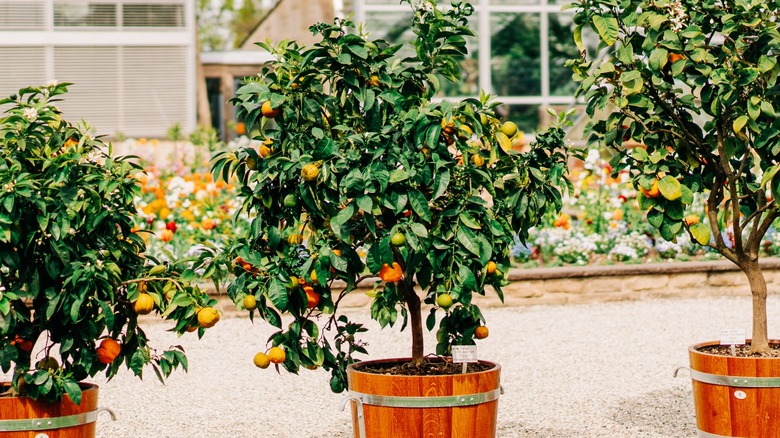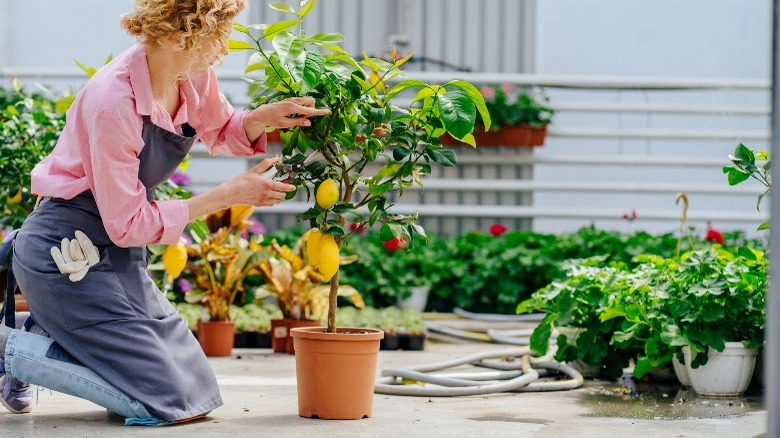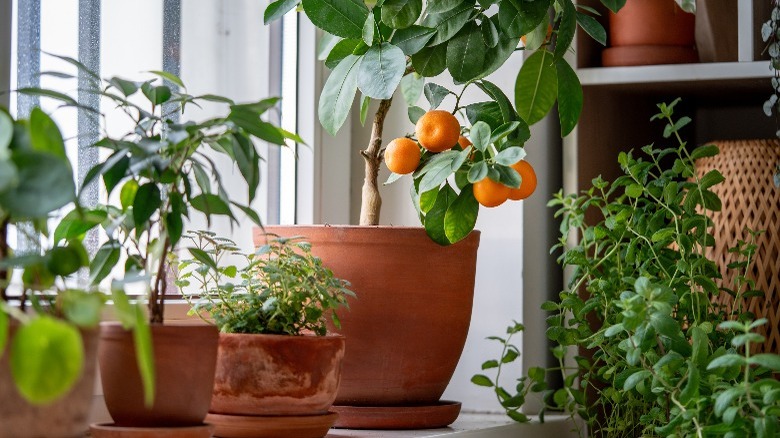Tips To Keep Your Citrus Trees Happy And Healthy Indoors During The Winter
Despite the assumption that citrus trees can only thrive in warm climates, those grown in containers can actually be brought inside if you live in a cooler region. That means anyone living in USDA hardiness zones 3 to 7, where outside temperatures often drop below freezing during the winter, can continue to maintain healthy citrus trees. But the trick is keeping your lemon, orange, kumquat, and other citrus trees happy while they wait out the cold weather. You can do this by being mindful about creating a slow transition for your tree from outdoors to indoors, and maintaining a stable temperature and environment for the tree once it's inside.
If your goal is a beautiful lemon tree you can grow all year round with no issue, it's possible if you give careful attention to protecting it from cold, freezing temperatures. Because citrus trees are evergreen, not deciduous, they do not go into full dormancy. This partial dormancy means that your trees will not actively grow or develop without consistently warm temperatures. Effectively transitioning your outdoor trees indoors to trigger this phenomenon without it impacting its long-term health and development is vital.
How to transition outdoor citrus trees inside for the winter
If you choose to try any tips and tricks to keep your potted citrus trees thriving over the years, make sure to ensure a proper transition period prior to overwintering. Typically, citrus trees should be moved indoors after allowing for acclimation in a shaded outdoor area. Instead of an abrupt temperature change, the plant gets used to chillier weather and is gently pushed into inactivity. Timing doesn't need to be exact, but plan to start the process a few weeks before bringing them inside.
As you prepare to bring in your potted trees, take the time to double check the leaves and soil for bugs. You don't want insects trying to hitch a ride for a winter vacation on your orange or kumquat tree. Treat your plant with a basic insecticidal soap and pick off any bugs, like aphids, as you see them.
Maintain a stable indoor environment for your citrus trees
The key to a healthy citrus tree is providing it with a stable indoor spot to successfully overwinter. Choose a space that will allow for a controlled environment without fluctuating temperatures. The optimal spot is a south- or southwest-facing window with consistent bright light. Avoid any place where the tree might experience irregular heat or cold. That includes next to heating vents or doors to the outside.
Citrus trees require less water in the colder months, but still need ample humidity to thrive in a dry indoor environment. You can reduce watering to once every three to four weeks, but find a way to create moist conditions. A container with pebbles filled slightly with water placed underneath the pot can provide the moisture your citrus tree needs. Misting the leaves lightly also helps create humidity and gets rid of bugs on indoor plants.
The partial dormancy that citrus trees experience means that these nitrogen lovers don't have the same fertilization needs over the winter. Do not make plans to fertilize your potted lemon or orange trees after bringing them inside. Instead, stop fertilizing potted citrus when fall rolls around. Similarly, wait until the trees go back outside to repot them. The more consistent conditions you keep your citrus tree in, the better outcome you will have in the springtime when it's time to move it back outdoors.


